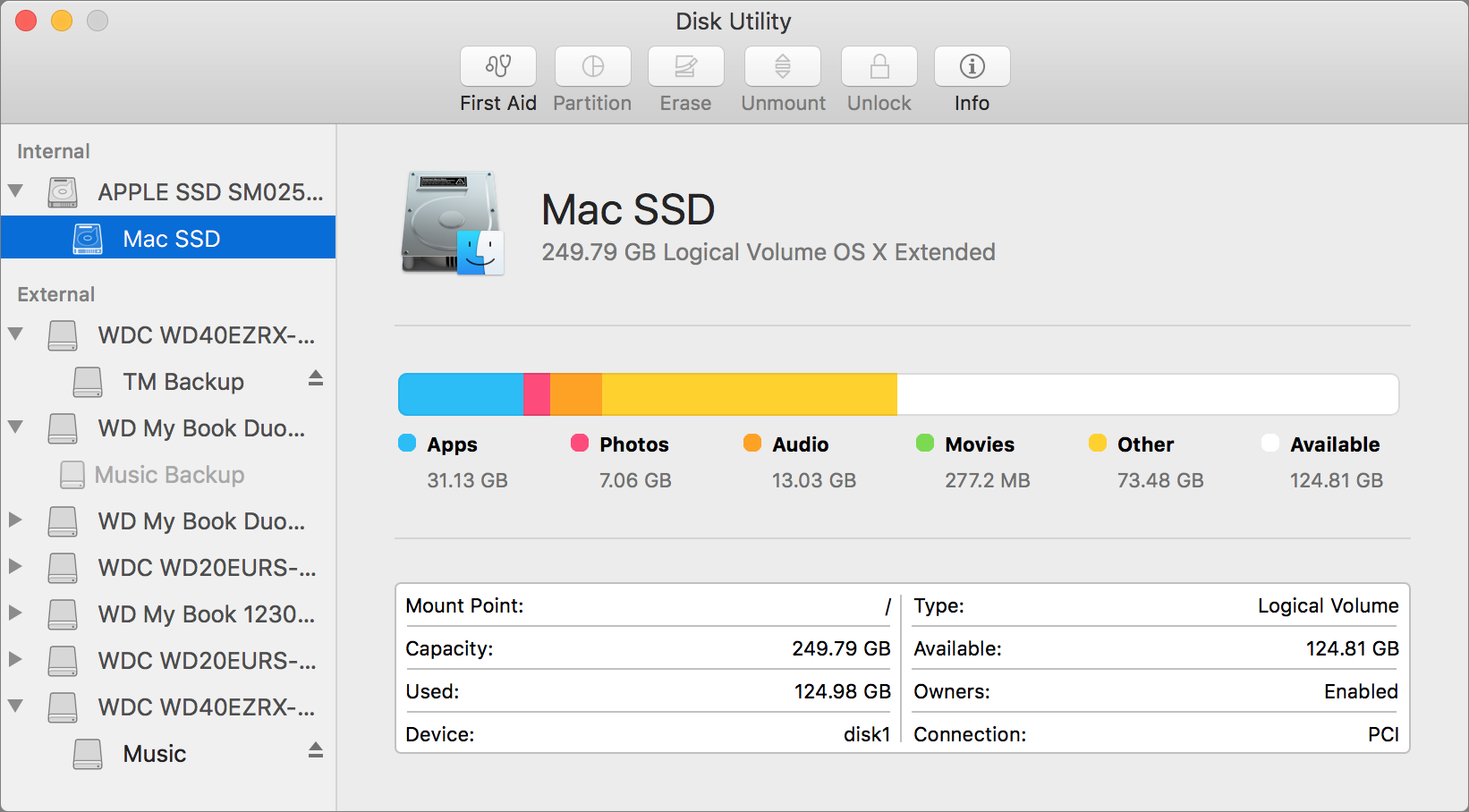

- How much space for os x mac os x#
- How much space for os x install#
- How much space for os x Patch#
- How much space for os x full#
The bigger issue is all the devices with embedded Unix, where telnet (unsecured) access is enabled, and no login is required.

How much space for os x full#
The difference Shellshock provides is access to root privileges, in other words full machine access to said Guest user.
How much space for os x Patch#
And both routes probably require a level of technical expertise that the person configuring their account as such can patch the exploit fairly simply.Īlso note that for route 1, enabling a Bash shell with Guest access for remote login most likely opens up your system to many other possible attacks. First, in the script running on Apache, and then in turn using that compromised script to send something to the Bash shell.Īs you can see, these are both edge cases. This one, however, requires exploiting two holes. The attacker can then insert the variables into the script or extension that gets run under the Bash shell, then the injection gets into the Shellshock vulnerability, and voila-machine compromised.
How much space for os x install#
This route requires OS X Server, an old (Lion or earlier) version of OS X, or for the user to install Apache/PHP/some other scripting environment. And enabling a guest shell on a box is probably not the most secure thing to do anyway. But as this connection is secured, they can’t get that from packet sniffing. If you don’t enable guest access your system is still vulnerable if the attacker knows or is able to guess your username and password.
How much space for os x mac os x#
If you have a Mac OS X or Linux system, open the Terminal and run this line of code: env x='() ”part), and that shouldn’t be happening. But with Shellshock, if someone is vulnerable, an attacker could insert malicious pieces of code from a remote location and get full system control of a victim’s machine.įortunately, the Shellshock vulnerability is unlikely to affect as many systems as Heartbleed, because not all computers running Bash can be exploited. With Heartbleed, somebody could grab credentials of a user and do what they wanted with it however, the bug only allowed an attacker to steal data. The Shellshock vulnerability ( CVE-2014-6271, CVE-2014-7169) has been compared to Heartbleed, partly because the software at the heart of the “Shellshock” bug, known as Bash, is also widely used in web servers and other types of computer equipment. The Shellshock flaw affects the Bash shell used across many Unix-based systems including Mac OS X and variants of Linux. Security experts are saying this vulnerability is as dangerous, if not more so, than the Heartbleed flaw found in OpenSSL software-an encryption service used by around two-thirds of websites to protect information sent to and from web pages-back in April. A flaw in the “Bash” shell-the command line interpreter for Unix-based systems including Linux and Mac OS X-has sent server administrators scrambling to patch their systems.

The vulnerability is called Shellshock, and it has rocked the security industry to its core. Malware + Recommended + Security News Shellshock Vulnerability: What Mac OS X Users Need to Know


 0 kommentar(er)
0 kommentar(er)
